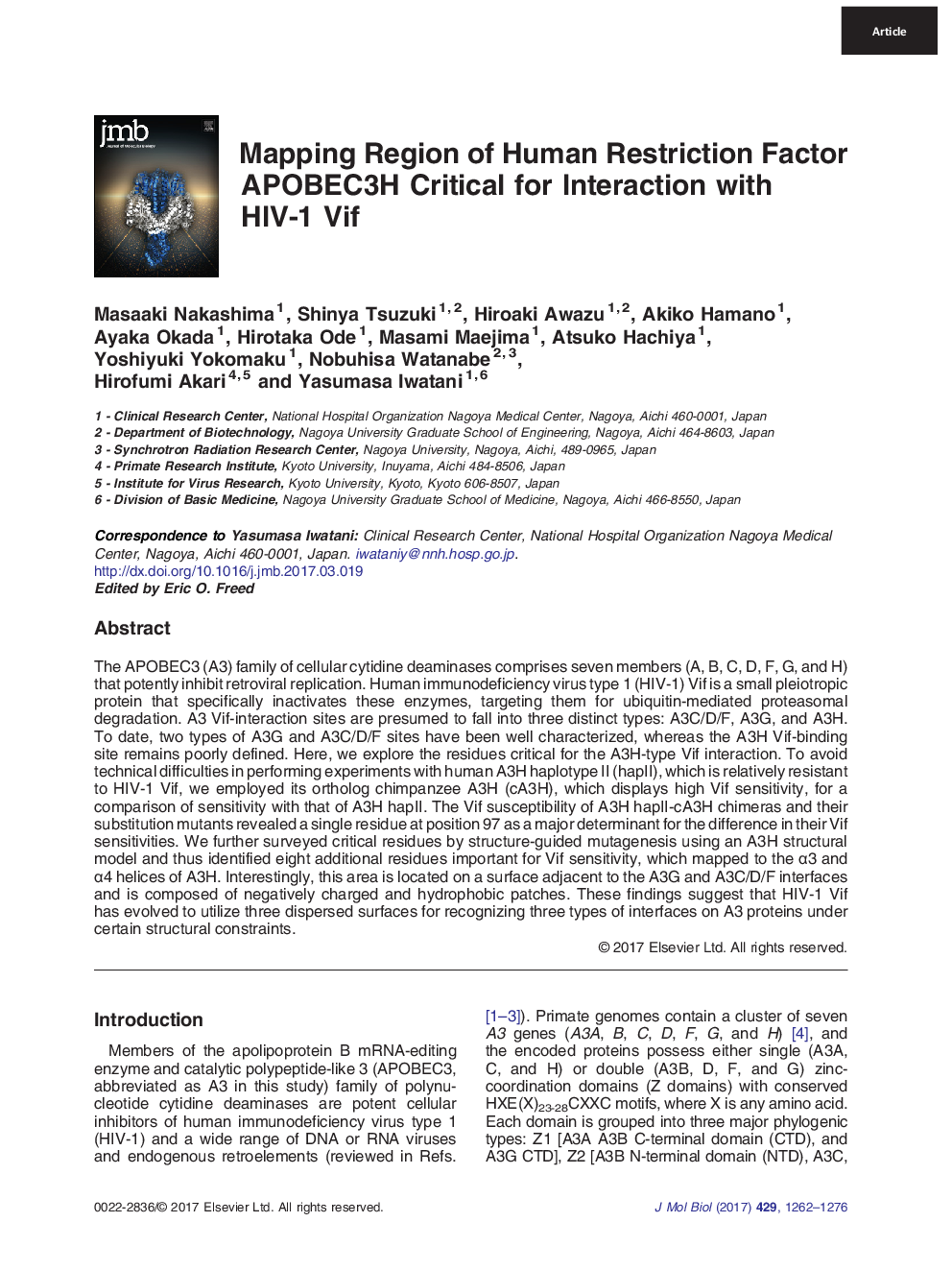| کد مقاله | کد نشریه | سال انتشار | مقاله انگلیسی | نسخه تمام متن |
|---|---|---|---|---|
| 5532927 | 1402087 | 2017 | 15 صفحه PDF | دانلود رایگان |

- The HIV-1 Vif protein interacts with cellular antiviral A3 enzymes to inactivate them via proteasomal degradation.
- A3 Vif interaction sites are presumed to fall into three distinct types: A3C/D/F, A3G, and A3H.
- A single residue at position 97 is a major determinant for the different Vif sensitivity between human and chimpanzee's A3Hs.
- Nine critical residues are clustered on the α3 and α4 helices on A3H, providing a shallow cleft for the Vif-interaction interface.
- The structural features of the Vif-binding interfaces are common to the three types of Vif-binding A3 family proteins.
The APOBEC3 (A3) family of cellular cytidine deaminases comprises seven members (A, B, C, D, F, G, and H) that potently inhibit retroviral replication. Human immunodeficiency virus type 1 (HIV-1) Vif is a small pleiotropic protein that specifically inactivates these enzymes, targeting them for ubiquitin-mediated proteasomal degradation. A3 Vif-interaction sites are presumed to fall into three distinct types: A3C/D/F, A3G, and A3H. To date, two types of A3G and A3C/D/F sites have been well characterized, whereas the A3H Vif-binding site remains poorly defined. Here, we explore the residues critical for the A3H-type Vif interaction. To avoid technical difficulties in performing experiments with human A3H haplotype II (hapII), which is relatively resistant to HIV-1 Vif, we employed its ortholog chimpanzee A3H (cA3H), which displays high Vif sensitivity, for a comparison of sensitivity with that of A3H hapII. The Vif susceptibility of A3H hapII-cA3H chimeras and their substitution mutants revealed a single residue at position 97 as a major determinant for the difference in their Vif sensitivities. We further surveyed critical residues by structure-guided mutagenesis using an A3H structural model and thus identified eight additional residues important for Vif sensitivity, which mapped to the α3 and α4 helices of A3H. Interestingly, this area is located on a surface adjacent to the A3G and A3C/D/F interfaces and is composed of negatively charged and hydrophobic patches. These findings suggest that HIV-1 Vif has evolved to utilize three dispersed surfaces for recognizing three types of interfaces on A3 proteins under certain structural constraints.
Graphical Abstract294
Journal: Journal of Molecular Biology - Volume 429, Issue 8, 21 April 2017, Pages 1262-1276